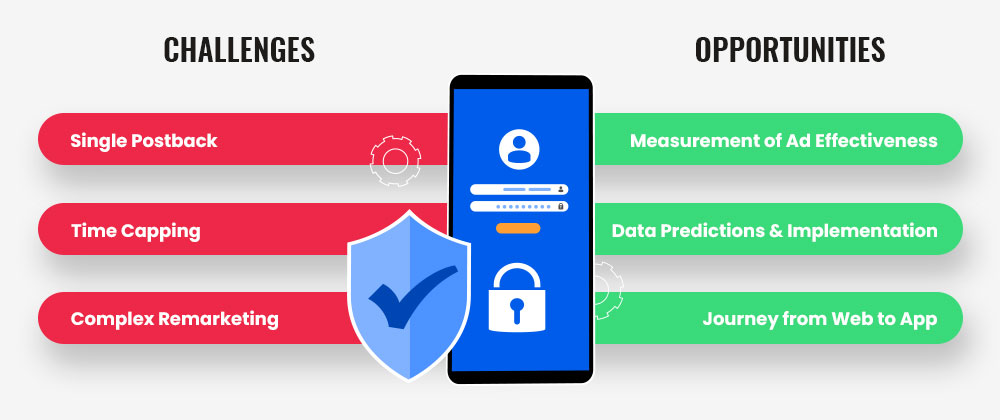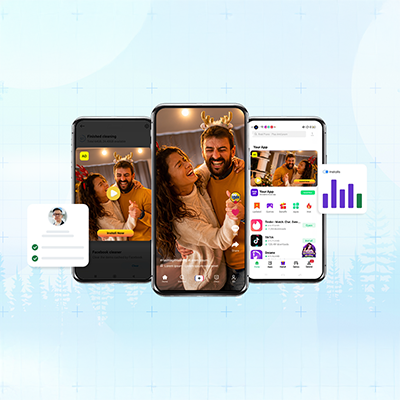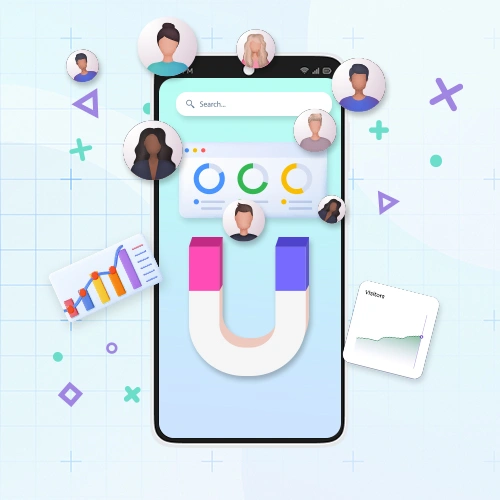In the recent past, mobile attribution and measurement have undergone some transformational shifts wherein, LAT (Limited Ad Tracking) regulations, deprecation of cookies and other third parties have given an extra advantage in the process of protecting personal data with some tight privacy policies for users.
It all began with Apple’s ATT (App Tracking Transparency) that requires opt-in measurement for iOS users. Undeniably this change is good for user’s privacy and data protection but has altered the way of mobile attribution and measurement activities. For Apple’s opt-in users, SKAdNetwork is the primary attribution mechanism that has made clear that the opt-in users will be grouped separately as compared to the largest segment of Android users. This is because GAID (Google Advertising ID) will remain unchanged and unaffected.
Moreover, in early 2020, likewise Firefox and Safari, Google also announced phasing out of the 3rd party cookies. Google said that in the year 2021 the phased-out cookies won’t be able to build the alternative identifiers; neither to track the users who browse across the web nor it will use their products. Until Apple’s SKAdNetwork updates, mobile attribution saw the high tides of changes.
This blog will let you know the changes and how an advertiser can add value to the measurement surpassing such fundamental changes, creating the new era of privacy, highlighting both the challenges and opportunities.

Challenges:
Single Postback: SKAdNetowrks only renders a single postback depending on the data signals wherein, no postback data is obtained from in-app events. This becomes challenging for advertisers as they lose most of the indicators to measure user’s lifetime value, which occurred between the time limit and postback. This is so because most of the LTV’s data is derived from in-app activities only.
Time Capping: Cap on time is a major challenge associated with SKAdNetwork because the SK function is called for the first time immediately after the launch of an app. Herein, after a duration of 24 hours, the timer automatically expires which locks the data and automatically sends a postback to the respective networks. This becomes problematic for advertisers because a timer of 24 hours binds them in effectively understanding the user’s post-install actions and activities.
Complex Remarketing: Most of the users still don’t have an IDFA due to opting out of ad tracking. With its absence, advertisers use other identifiers to encourage and inspire users to opt-in either by requesting the email address or any other kind of identification which becomes a bit complex and challenging for them. However, requesting the user’s email or using other identification methods are considered the first-party data that adheres to the new privacy policies. Collecting first-party data via the user’s owned device aids advertisers in extending and enlarging their UX.
As every problem comes with a solution and does these challenges. An advertiser can still add value to it following the below-mentioned opportunities.
Opportunities:
Measurement of Ad Effectiveness: Using the testing mechanism, aids the advertisers to better understand the true insights and value of a campaign with data-driven essentials. Incorporating the mechanism of incrementality, it identifies the group of users, sharing common or similar characteristics (cohorts) who wouldn’t have made conversions without making some efforts. In SKAdnetwrok, undeniably data is limited but incrementality strives to fill the gap between the nullified spaces and campaign with the help of data-driven intelligence.
Data Predictions & Implementation: Advertisers can leverage algorithms of Artificial Intelligence and Machine Learning as it makes them easy to understand the user behaviour and usage pattern of an app. Analysis of such statistics, an advertiser can implement those predictions on the valuable users, over time. This practice would enable and allow them to measure the success of a campaign and optimize it accordingly.
Journey from Web to App: The mobile web app is one of the foremost touchpoints that aids the advertisers to tap the potential consumers and caters to them with a brand’s offerings. This is because mostly a user researches a product from its website. Hence, it’s better to direct users to an app from the web with a positive onboarding experience. This also serves the advertisers with the first-party data without the use of IDFA.
Thus, for an advertiser, app marketing in the era of privacy measures and controls has become a bit challenging but isn’t impossible. Considering the opportunities, the business operations can still be continued with its implementations. This will surely help the advertisers to effectively cope up with the challenges and bring effective attribution into the picture.



